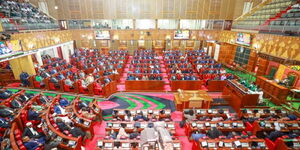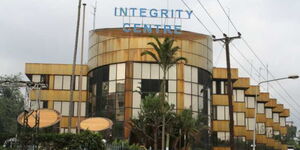The ambitious East African Community Cross-Border Payment Masterplan has been fully adopted, Central Bank Governors drawn from countries within the EAC announced.
The new development was revealed after the conclusion of the 28th Ordinary Meeting of the EAC Monetary Affairs Committee on Friday, May 9, composed of Central Bank Chiefs drawn from Kenya, Somalia, Burundi, South Sudan, Rwanda, Tanzania and Uganda.
The adoption of the Masterplan marked a significant step towards revolutionising cross-border payments within the EAC as it sets out strategic initiatives for payment systems modernisation and integration within the EAC region.
The Masterplan was developed through extensive consultations with the Partner States’ Central Banks and envisions a future where East Africans can conduct cross-border transactions with ease, fostering deeper economic integration and financial inclusion.
Its mission is to implement a secure, efficient, and interoperable payments framework that aligns with the objectives of the EAC Monetary Union.
The plan targets faster transactions, lower costs, and better access for people, businesses, and banks.
It lays out a clear vision: simplify regulations, modernize infrastructure, and ensure individuals, businesses, and financial institutions all have equal access to payment systems—no matter where they are in the region.
The need for the plan was brought about by various challenges such as high transaction costs, limited interoperability, and regulatory disparities across partner states, as seen in the case of mobile money transactions.
For instance, sending $200 (Ksh25,836) from Tanzania to Kenya costs 35 per cent in fees. The same transaction costs 30 per cent in Uganda and 20 per cent in Rwanda. That is well above the global average of 12.5 per cent, according to the International Monetary Fund (IMF).
The strategic framework of the Masterplan is built upon four key pillars: Governance, Legal, Regulatory, and Oversight Framework; Infrastructure; Inclusivity; and Capacity Building.
The pillars are expected to create harmonised regulations to enhance compliance and interoperability, as well as modernise and expand payment systems to enable faster, cost-effective transactions.
Other benefits include enhancements to the East African Payment System (EAPS), ensuring equitable access to payment systems for individuals, businesses, and financial institutions across all Partner States, and strengthening technical expertise and financial literacy to support sustainable modernisation efforts.
Also, the Masterplan proposes targeted initiatives such as the development of a mutual recognition framework for cross-border Payment Service Provider (PSP) licensing and a harmonised regulatory framework for mobile money and e-wallet transactions.
The rollout of the Masterplan is anticipated to occur in three phases; whereby in the short-term (1–2 years) it will address regulatory harmonisation, foundational infrastructure upgrades, and capacity-building initiatives; medium-term (3–5 years) it will ensure full interoperability of Partner States’ payment systems and operationalisation of the regional instant retail switch; and long-term (beyond 5 years) it is set to enhance deeper regional integration, alignment with global payment networks, and adoption of emerging financial technologies.












